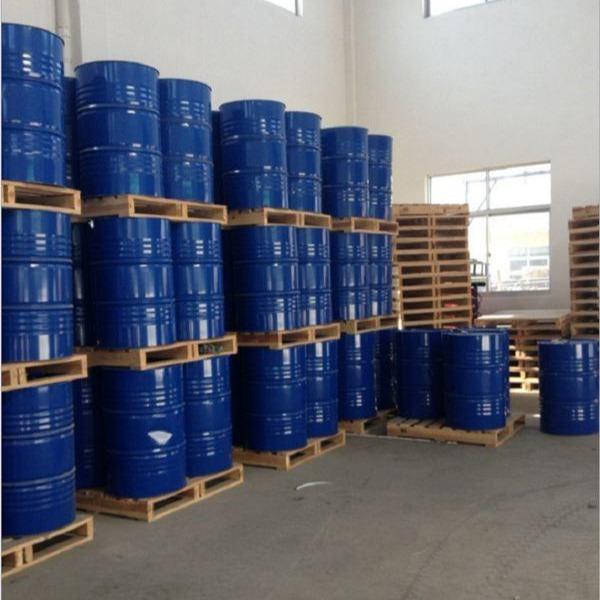-

Propylene glycol
The scientific name of propylene glycol is “1,2-propylene glycol”. The chemical formula is CH3CHOHCH2OH. The molecular weight is 76.10. There is a chiral carbon atom in the molecule. The racemic body is a hygroscopic viscous liquid with a slightly spicy taste. The specific gravity is 1.036 (25/4℃), and the freezing point is -59℃. The boiling points are 188.2℃ and 83.2℃ (1,333 Pa). It is miscible in water, acetone, ethyl acetate and chloroform, and soluble in ether. It can be disso...Read more -

Diethylene glycol
Diethylene glycol, also known as diethylene glycol, forms esters when reacting with acid anhydrides. It forms ethers when reacting with alkyl sulfates or halogenated hydrocarbons. It is mainly used as a gas dehydrating agent and extractant, and is also used as a lubricant and finishing agent for textiles. It is obtained by the reaction of ethylene oxide and ethylene glycol. Diethylene glycol has been widely used in various cosmetics as a solvent, heat preservation agent, and viscosity control...Read more -

Styrene
Styrene is an organic compound formed by replacing one hydrogen atom of ethylene with benzene. The electrons of the vinyl group are conjugated with the benzene ring. It is a kind of aromatic hydrocarbon. The molecular formula is C8H8, and the structural formula is C6H5CH=CH2. It exists in storax (a natural fragrance). It is a colorless oily liquid with a special aroma. The melting point is -30.6℃, the boiling point is 145.2℃, the relative density is 0.9060 (20/4℃), the refractive index is 1.5...Read more -

neopentyl glycol
Chemical properties: White crystalline solid, odorless, hygroscopic. Soluble in water, lower alcohols, lower ketones, ethers and aromatic compounds. Uses: 1. Mainly used in the manufacture of resins, plasticizers and surfactants 2. Neopentyl glycol has a wide range of uses, mainly as a plasticizer for the production of unsaturated polyester resins, oil-free alkyd resins, polyurethane foams and elastomers, additives for advanced lubricants and other fine chemicals. Neopentyl glycol is an excel...Read more -

Diethylene glycol monobutyl ether
Diethylene glycol butyl ether is a colorless liquid, soluble in water and oils. It is prepared by heating ethylene oxide and ethylene glycol butyl ether under pressure.Read more -

2-Butoxyethanol
Ethylene glycol butyl ether is one of the important derivatives of ethylene oxide (EO). It is a green and environmentally friendly solvent, a colorless liquid, with a molecular weight of 118.17, a distillation range of 163-174°C, not volatile, a relative density of 0.9019, a boiling point of 171.1°C, a flash point of 60.5°C, and is toxic. It is miscible with water and hydrocarbon solvents such as linseed oil, and has a strong solubility for synthetic rubber. It is suitable as a solvent for na...Read more -

1-Methoxy-2-propyl acetate
Chemical properties: Appearance: colorless and transparent liquid Content: ≥99.0% Water: ≤0.05% Distillation range: 145-152℃ Acidity: ≤0.03% Specific gravity (d420): 0.966 Flash point: 51°C Applications: 1. Mainly used as solvent for ink, paint, ink, textile dye, textile oil, and can also be used as a cleaning agent in the production of liquid crystal displays; it is a low-toxic high-grade industrial solvent with excellent performance, and has a strong solubility for polar and non-polar subst...Read more -

1-Methoxy-2-propanol
Propylene glycol ether is less toxic to the human body than ethylene glycol ether products and belongs to the low-toxic ether category. Propylene glycol methyl ether has a weak ether smell, but no strong irritating odor, making its use more extensive and safe. Propylene glycol methyl ether is an environmentally friendly organic solvent and is widely used in chemical production.Read more -

Ethylene glycol monoethyl ether acetate
Chemical properties: Colorless liquid. Freezing point -61.7℃, boiling point 156.3℃, 51℃ (2.8kPa), relative density 0.973 (20℃), melting point -61.7℃, refractive index 1.4055 (20℃), flash point 51℃ (closed cup), 66℃ (open cup), ignition point 379℃. It is miscible with general organic solvents and soluble in water. It has a pleasant ester fragrance. Uses: 1. Ethylene glycol ether acetate can be used as a solvent for resins, leather, inks, etc., and can be used with other compounds as leather ad...Read more -

Allyl chloride
Allyl chloride, also known as allyl chloride, is an organic synthetic raw material. The physical properties of allyl chloride are: colorless and flammable liquid, corrosive and irritating. Slightly soluble in water, miscible with ethanol, chloroform, ether and petroleum ether. Its uses: It can be used as an intermediate in the production of epichlorohydrin, allyl alcohol, glycerin, etc., as a solvent for special reactions, and is also a raw material for pesticides, medicines, fragrances, and ...Read more -

Resin epoxy
All polymer compounds containing epoxy groups in their molecular structure are collectively referred to as epoxy resins. Cured epoxy resins have good physical and chemical properties. They have excellent bonding strength to the surfaces of metals and non-metallic materials, good dielectric properties, small set shrinkage, good product dimensional stability, high hardness, good flexibility, and stability to alkali and most solvents. Therefore, they are widely used in defense and various sector...Read more -
Dimethyl carbonate
Dimethyl carbonate is referred to as DMC. It is a colorless, transparent liquid with a pungent odor at room temperature. Its relative density (d204) is 1.0694, its melting point is 4℃, its boiling point is 90.3℃, its flash point is 21.7℃ (open) and 16.7℃ (closed), its refractive index (nd20) is 1.3687, and it is flammable and non-toxic. It can be mixed with almost all organic solvents such as alcohols, ketones, and esters in any proportion and is slightly soluble in water. It can be used as a...Read more





